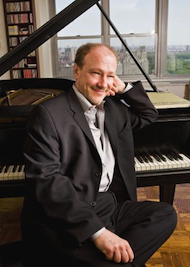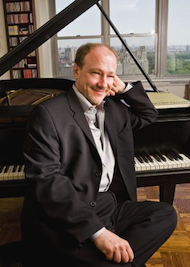
A severely strained shoulder kept clarinetist Martin Fröst from performing in San Francisco on Monday, with pianist Marc-André Hamelin and violinist Anthony Marwood at SFJAZZ. The news of Fröst’s injury didn’t reach the presenter, San Francisco Performances, until last weekend, so it had to scramble to find a suitable replacement at short notice.
It did so, in the person of the Belarus-born Israeli clarinetist Alexander Fiterstein, who flew in almost overnight for the concert, which was also his San Francisco recital debut.
No changes needed to be made to the concert program of duos and trios, since Fiterstein was familiar with the four pieces for which he was needed: the first Rhapsodie for clarinet and piano by Debussy; the sonata for clarinet and piano by Poulenc; the suite from L’Histoire du soldat for violin, clarinet, and piano by Stravinsky; and Contrasts for violin, clarinet, and piano by Bartók.
The other two compositions on the program were Schubert’s Rondo in B Minor for violin and piano, D. 895, and another Debussy piece: his sonata for violin and piano in G Minor.
Their ensemble playing transcended the expected level of professionalism and shot straight into musical camaraderie.
Nothing about Monday night’s concert would have suggested that Fiterstein was a last-minute substitute and that the three musicians had never before performed together, in this combination. They are professionals, of course, yet their ensemble playing transcended the expected level of professionalism and shot straight into musical camaraderie. They clearly had an enormous amount of fun while performing this great music, to the joy of an appreciative audience.
There was already much to enjoy in Poulenc’s clarinet/piano sonata and Debussy’s contemplative violin/piano sonata, but Hamelin, Marwood, and Fiterstein reached the pinnacle of their combined musicianship in the two trios: Bartók’s Contrasts, the evening’s flagship piece, with its percussive piano part and jumpy rhythms; and the suite from L’Histoire du soldat, especially in the perfect microcosm of its central movement, aptly called “A Little Concert.”
With its many changes in shade and direction, its twisting melodic lines, and the amazing level of musical and technical skill on the part of the players, this was the symbolic sublimation of the entire performance.
Not everything went equally well, though. The Schubert Rondo that opened the evening proved to be one big search for the right balance, which was not reached before the piece had ended. And even though Fiterstein won me over with his musical charm and playful versatility, I found the velvet in his tone somewhat thin and not particularly warm.

